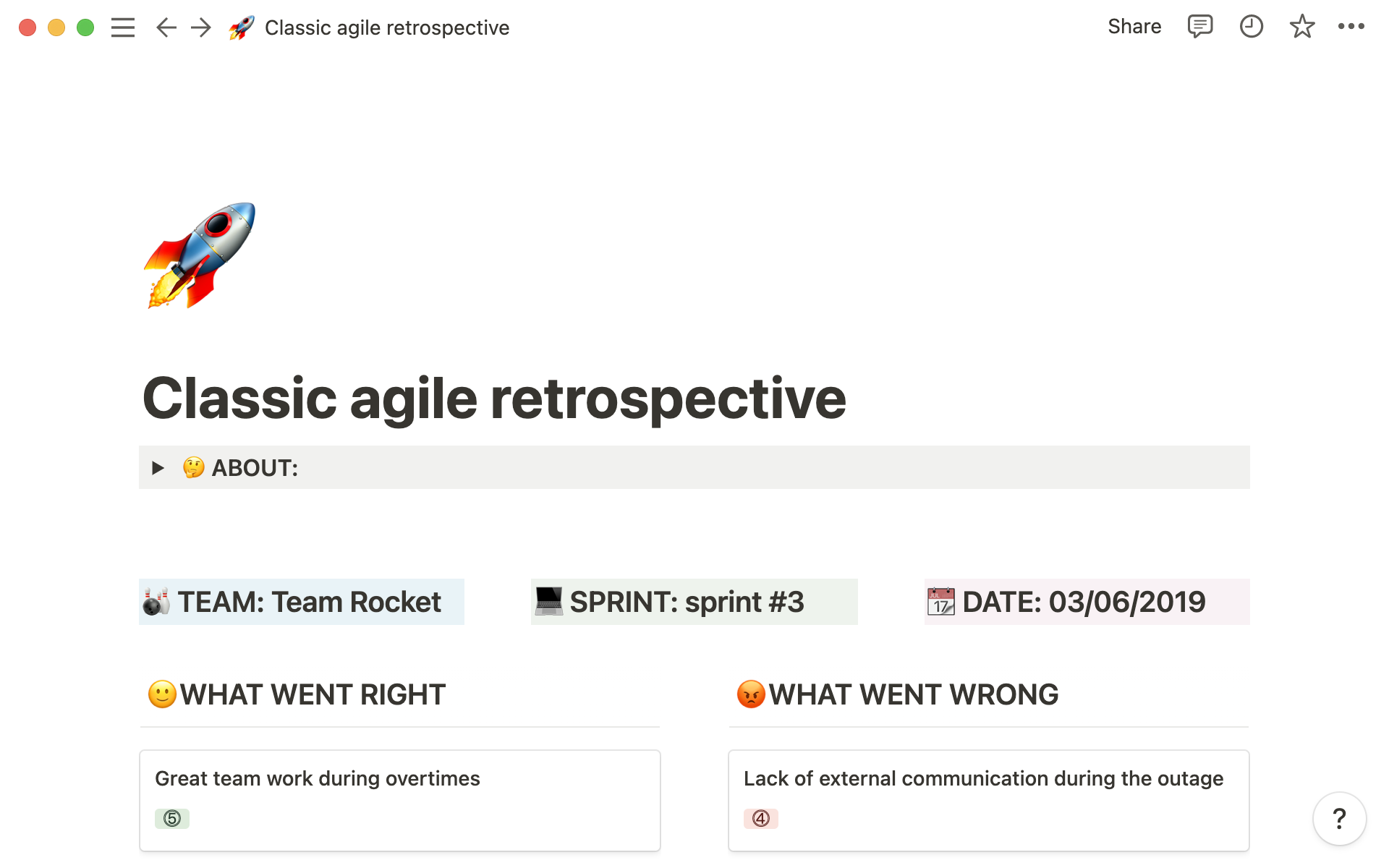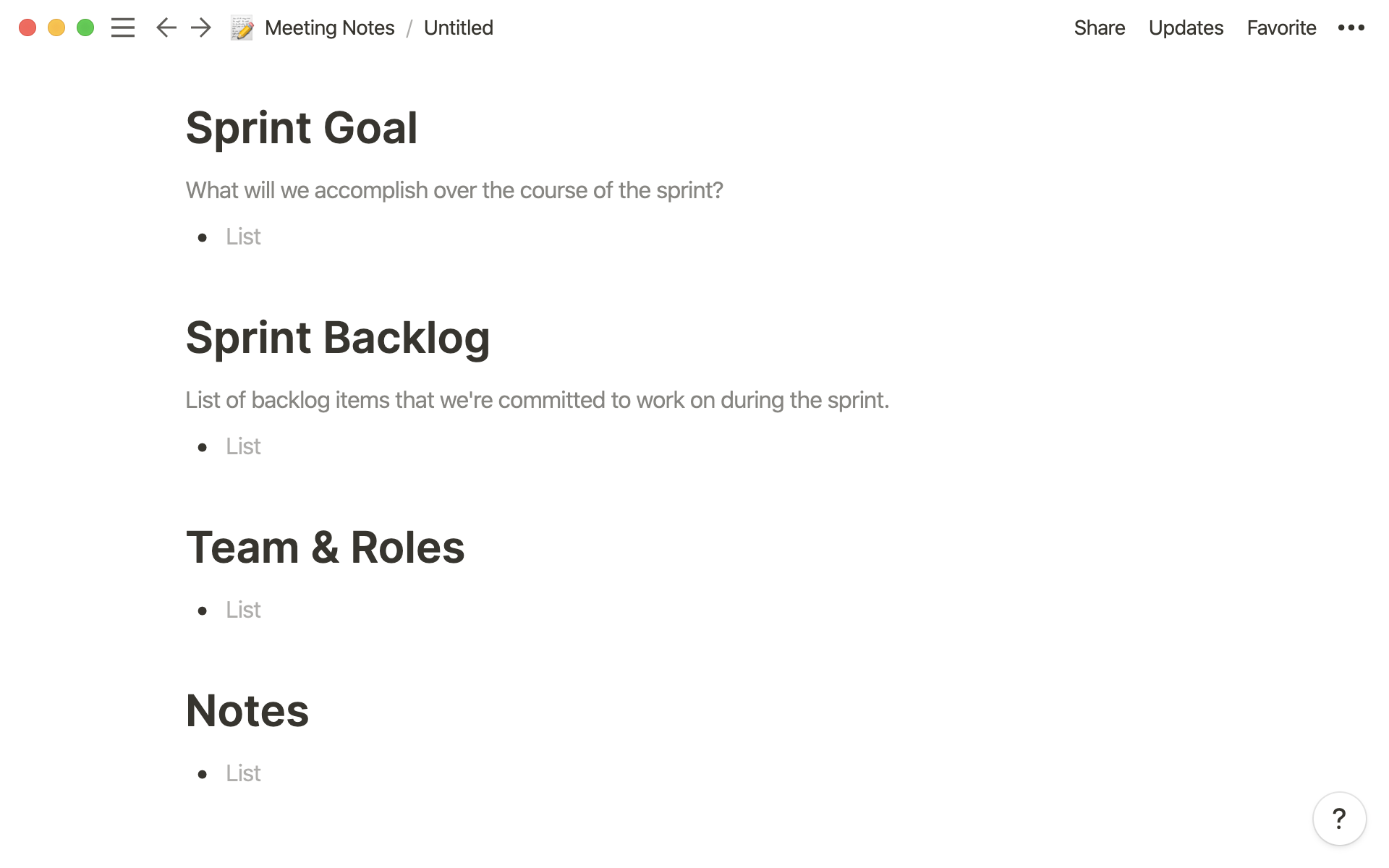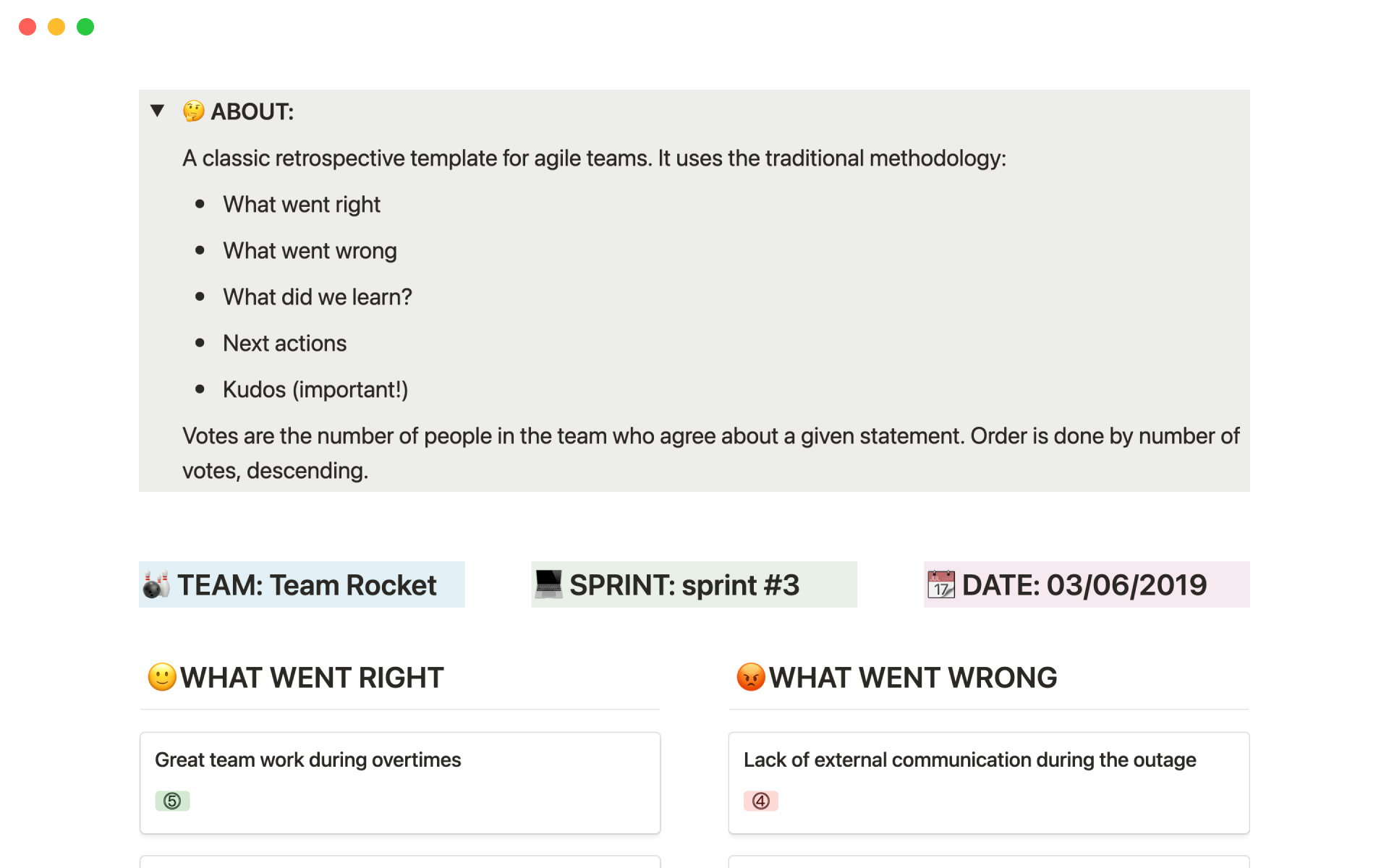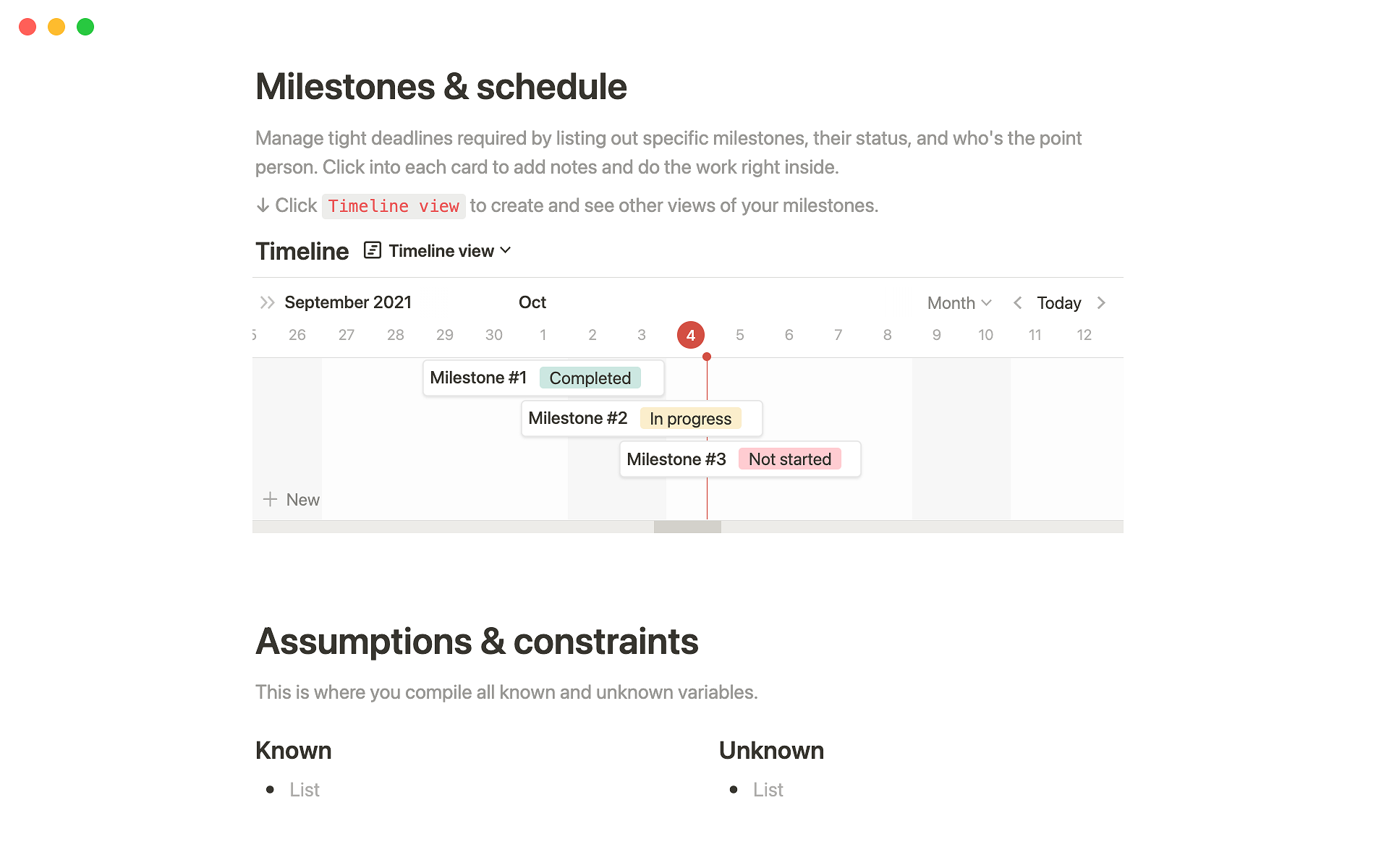Learn how sprint planning helps your entire team keep pace.

How does sprint planning benefit collaborative teams?
Sprint planning defines the purpose, goals, and tasks for a set time frame (a “sprint”).
It breaks large, overwhelming tasks and goals into subtasks to make them more manageable and less daunting for everyone involved.

Don’t let sprint planning leave you out of breath! We know there are lots of moving parts to juggle, but Notion’s connected workspace has your back.
You can plan, detail, and schedule sprints with ease thanks to centralized meeting notes, project timelines, and resources.

How you can do sprint planning with Notion
Sign up for Notion and invite your team. Sign into your Notion account.
Create a new page in your workspace and add sections describing the project. Include blocks to visualize ongoing work, to-dos, backlogs, and completed work.
Decide on a timeframe, like a two-week sprint. Create a database that itemizes objectives and tasks based on this timeframe.
For each task, create a page that offers more details like deadlines, responsible individuals, and task statuses – and sort or filter to create visualizations like project boards or timelines.



Simplify your sprint-planning process with Notion
Start with one of our free sprint-planning templates, like the brand design sprint planner, to empower your Agile team.
FAQs
What are the four steps within a sprint?
What are the four steps within a sprint?
Parts of a sprint include:
Sprint planning
Daily stand-up meetings
Sprint review and retrospective
Sprint closure
How should a sprint plan be structured?
How should a sprint plan be structured?
A sprint plan usually consists of the following components:
Current sprint objective
Sprint backlog (items from within this sprint)
Team capacity
Product backlog (items from the project as a whole)
What’s the sprint planning checklist?
What’s the sprint planning checklist?
Tise sprint planning checklist helps scrum teams and masters, project managers, and product owners standardize the process:
Review the sprint goal and backlog items
Assess the team's capacity
Decide what success looks like
Assign tasks to team members
Schedule the sprint review and retrospective meetings
Determine what’s in the sprint planning meeting for the upcoming sprint.